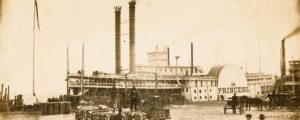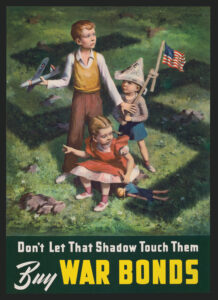America Aflame: How the Civil War Created a Nation
by David Goldfield; Bloomsbury Press
Did evangelical religion cause the Civil War? This fascinating book’s emphatic answer: Yes. America, its settlers and founders believed, was God’s City on a Hill. As the nation looked west, its God-given Manifest Destiny led to war with Mexico, whence it bagged Texas, the Southwest and California—just in time for the Gold Rush to help pump its rising industrial and trading might. That exacerbated North-South tensions over how to divvy up the conquests between free and slave states. In his comprehensive chronicle of the tumultuous prethrough-postwar era, David Goldfield, who has as sharp and engaging a way with a thumbnail sketch as he does with rethinking history, demonstrates how evangelical religion’s influence was central to that fateful debate.
The Second Great Awakening of the early 1800s instilled a moral-absolutist mind-set in its widespread zealots, mostly across the North. Their evangelical fervor emphasized each individual’s sacred duty to measure this Promised Land’s earthly rules against God’s higher laws. The hardening attitudes that Northern ministers like Henry Ward Beecher promulgated against the sin of slavery split Baptists and Methodists and Presbyterians into regional factions. These ever-more-adamant schisms leached into politics and, by the 1850s, made the art of compromise increasingly impossible and irrelevant. The Civil War was the inexorable result.
How could God be on both sides? This dilemma grew as the sickening carnage left 600,000 dead and nearly as many wounded and chunks of the South as burned-over rubble. It forced more and more Northerners, including Abraham Lincoln, to question their certainties about what exactly was on God’s mind. Goldfield tracks how the desire to leave the war’s relentless slaughter behind finally tamped down evangelical fires in the Northern public—and Republican politics. That left freed blacks vulnerable in the murderous fray of Reconstruction. It also ushered in the Gilded Age, when science and business and getting ahead combined into Social Darwinism (with its new “scientific” racism) and propelled the invigorated Union into our modern era.
But, Goldfield notes, “As northerners moved away from a civil society informed and directed by evangelical Protestantism, southerners embraced it…so fiercely that it became a folk religion indistinguishable from southern culture.” The war came to be viewed as an Old Testament trial of God’s Chosen People. Slavery, or at least black inferiority, was now more than ever God’s ordained social order. The unrepentant, unreconstructed and decimated South took most of a century to recover economically, but demanded recognition and redemption for its Lost Cause as it “walked backward into the future.”
The questions that Goldfield’s reinterpretation of the Civil War raise for our time are not necessarily reassuring. Claiming God for your side is as American as apple pie. So are rambunctious factions. But a wholesale refusal to seek workable compromise on serious or divisive issues—amplified by sensationalist media—can reduce democratic politics from the art of the possible to invective and propaganda. Will our options someday narrow in ways that Civil War survivors wanted never to witness again?
Originally published in the June 2011 issue of American History. To subscribe, click here.




